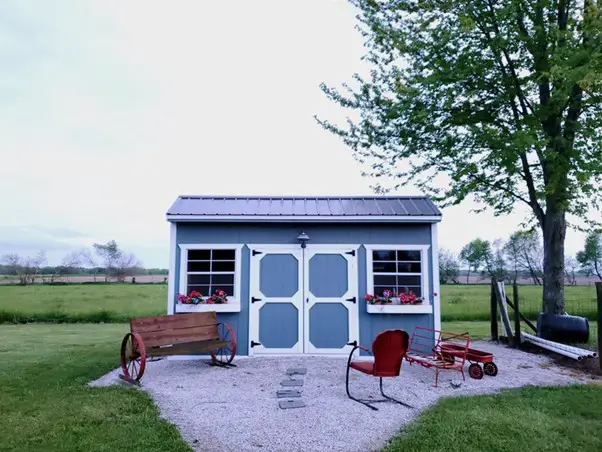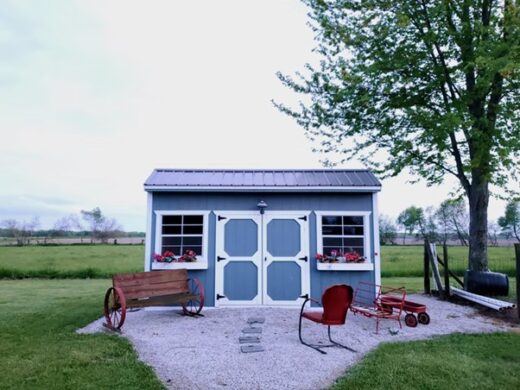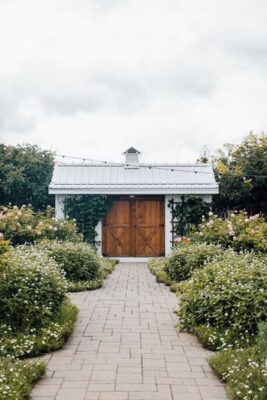8 things to look out for when introducing electricity to a shed, Property renewal style, Home refurb advice
Things to look out for when Introducing Electricity to a Shed
27 Apr 2022
Are you planning to introduce electricity to your shed? If so, it’s important to be aware of the risks and take precautions. In this blog post, we will discuss eight things you need to look out for when bringing electricity into a shed. By being aware of these dangers, you can ensure that your project goes smoothly and safely.
Location
The first thing you need to consider when introducing electricity to your shed is the location. The shed should be situated close to your home so that you can easily access it, but not too close as this could pose a safety hazard. Depending on the location of your shed, this could be a costly exercise. Another important factor to consider is the position of your shed on other buildings and trees on your property. The shed should be situated in an area where it is not at risk of being damaged by falling branches or high winds. It is also important to make sure that the shed is not located in a flood-prone area.
Wiring
One of the most important things you’ll need to do when introducing electricity to your shed is to make sure that all of the wirings are up to code. This means making sure that all of the outlets are properly grounded, and that any exposed wires are covered with electrical tape. You should also have a professional electrician come and take a look at your wiring before you turn on the power, just to be safe.
Another important thing to keep in mind when it comes to wiring is that you’ll need to make sure that any extension cords or other appliances that you use in your shed are rated for outdoor use. This is because they’ll be exposed to the elements, and you don’t want them shorting out or catching fire because of it.
Circuit Breakers
A circuit breaker is a safety device that is used to protect an electrical circuit from damage caused by overload or a short circuit. Circuit breakers are available in a variety of sizes and types, but the most common type is the thermal-magnetic circuit breaker. This type of circuit breaker uses a combination of heat and magnetism to open the circuit when an overload or short occurs.
Thermal-magnetic circuit breakers are designed to trip (open the circuit) when the current flowing through them exceeds the rated value. The rated value is the maximum amount of current that can flow through the breaker without causing it to trip. The rated values for common household circuits are 15 amps (for light fixtures and small appliances), 20 amps (for large appliances), and 30 amps (for heavy-duty circuits such as air conditioners and electric dryers). In addition, you will need a switchboard as well, for protection and control of circuits. Similarly, there are regular switchboard upgrades that will need to be carried out by a licensed electrician, so make sure to perform regular checks.
Moreover, when a circuit breaker trips, it interrupts the flow of electricity to the circuit. This prevents the current from continuing to rise and damaging the wires or other components of the circuit. Circuit breakers are an important safety feature of any electrical system, and they should be tested regularly to ensure that they are working properly. If you are introducing electricity to a shed for the first time, be sure to install a circuit breaker that is appropriate for the size of the shed and the amount of power that will be used in it. Also, be sure to test the circuit breaker regularly to ensure that it is working properly.
Grounding
All electrical projects should start with a proper grounding system in place. This will ensure that your shed is safe from electrical hazards. You can create a grounding system by driving a metal rod into the ground near your shed. Attach a copper wire to the rod and run it around the perimeter of your shed. Finally, connect the wire to any metal objects inside the shed. This will create a safe path for electrical current in case of a power surge.
Don’t forget to test your grounding system regularly to make sure it is working properly. You can do this by using a voltmeter. Simply attach the voltmeter to the copper wire and ground rod. If the reading is above zero, then your grounding system is working correctly.
Outlets
If your shed is going to have outlets, make sure they’re the right kind. You don’t want to use regular household outlets because they’re not made for outdoor use and can be a fire hazard. Look for weather-resistant outlets that are specifically made for outdoor use. These will have little covers on them that you can open and close to keep the elements out when they’re not in use.
A thing to keep in mind with outlets is that you’ll need to have GFCI (ground fault circuit interrupter) outlets installed if you’re going to be using any electrical appliances in your shed. GFCI outlets are required by law in many states if you’re going to have electrical appliances in an outdoor shed. They’re designed to shut off the power if they detect a ground fault, which can prevent fires and electrocution. You can usually identify GFCI outlets by the little “test” and “reset” buttons on them.
Another type of outlet you might want to consider is a USB outlet. These are great if you want to be able to charge phones or other devices in your shed without having to use a bunch of adapters. Just make sure that the USB outlets you buy are weather-resistant so they don’t get damaged by the elements. One last thing to keep in mind with outlets is that, depending on where your shed is located, you may need to have it professionally wired by an electrician. This is especially true if your shed is far away from your house or any other power source.
Electrical Inspections
After you have your electrician install the main panel and any subpanels, you’ll want to schedule an electrical inspection. The inspector will come out and make sure that everything was installed properly and meets code. They’ll also test the grounding and bonding to ensure that it’s up to par. Once the inspection is complete, you’ll be able to get your certificate of occupancy, which allows you to legally use your shed as a living space. Scheduling an electrical inspection is easy – simply contact your local building department or search for “electrical inspections” online. Be sure to do this before you move in so that you can avoid any costly delays or fines.
Insurance
When you introduce electricity to a shed, you need to make sure that your insurance policy covers any damage that may occur as a result of electrical fires or shocks. If you’re not sure whether or not your policy covers these risks, give your insurer a call and ask about it. They’ll be able to tell you what’s covered and what isn’t.
It’s also worth mentioning that most home insurance policies will only cover damage caused by electrical faults if the property is connected to the mains supply. So, if your shed is off-grid and powered by solar panels or a wind turbine, it’s likely that any damage caused by electrical problems won’t be covered by insurance.
Safety Precautions
When introducing electricity to a shed, there are some important safety precautions to take. Always consult with a professional electrician to ensure the job is done safely and up to code. Make sure all connections are tight and secure, and that any exposed wiring is properly insulated. Keep flammable materials away from electrical sources, and never overload circuits. By following these simple safety guidelines, you can avoid potential hazards and keep your shed electrically safe.
Overall, introducing electricity to your shed is a great way to increase its functionality. However, there are a few things you need to keep in mind before taking on this project. By following the tips listed above, you can be sure that your electrical installation will go smoothly and safely.
Comments on this When Introducing Electricity to a Shed article are welcome.
Building Articles
Architecture
Seoul Animation Center Competition

image courtesy of architects practice
Seoul Animation Center Competition
, Athens, Greece
Design: LC Architects

photo © Nikos Daniilidis
Cosmote TV HQ and Studios
Useful products to help you organize and declutter
Comments / photos for the Look out for when Introducing Electricity to a Shed page welcome








